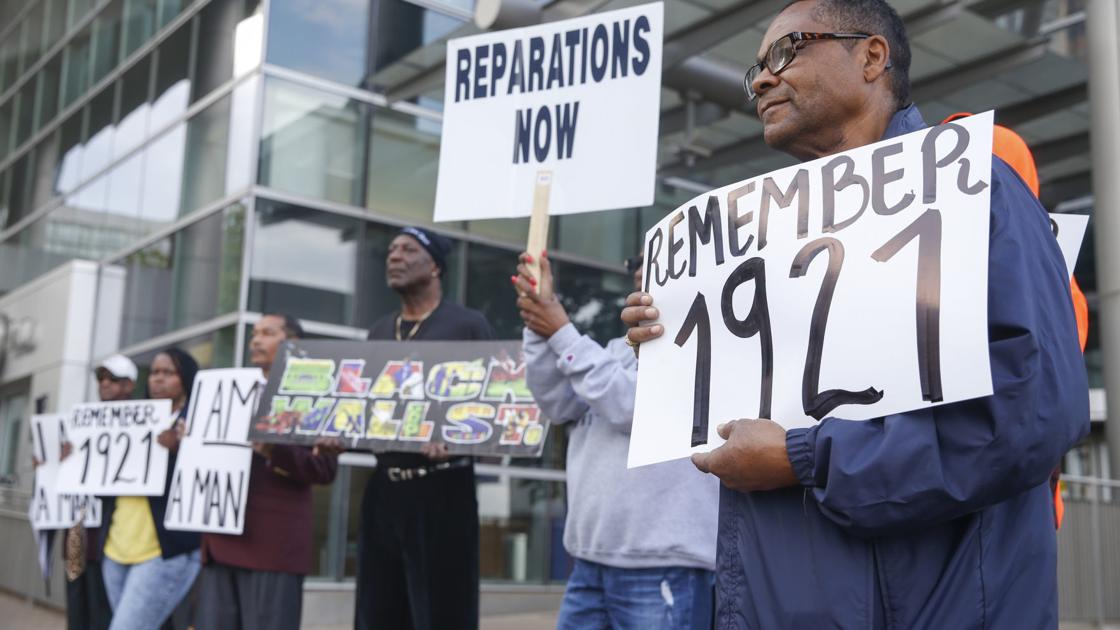Legislation in Washington may have lost the little momentum that it had, but state and local governments across the US are forging ahead with their plans to design and implement reparations proposals for Black residents.
Take, for instance, Evanston, Illinois. As of last Friday, the city had received more than 500 applications for its restorative housing initiative, which will disperse $25,000 for home down payments, mortgage payments or home repairs to chosen applicants, as part of the city’s reparations program.
That same week, voters in Detroit OK’d a ballot measure to create a commission to mull over reparations. The aim is to recommend programs that pay particular attention to housing and economic development in the majority-Black city.
And a year after California became the first state in the country to establish a reparations task force — an effort propelled by Secretary of State Shirley Weber — panel members have started to wrestle more earnestly with two fundamental questions: What might compensation look like? And who might be eligible?
Such examples illuminate both the enduring vigor of calls for reparations as well as the complexity of these demands. In addition to considering the legacy of slavery, many efforts are examining more contemporary harms: housing and education segregation, the racial wealth gap, environmental racism. Adding to the complication is the fact that not everyone is in agreement about what counts as an act of reparative justice.
Here’s a closer look at the ongoing reparations movement in California and beyond:
Wasn’t California a free state? Why is it considering reparations?
It’s true that California entered the Union as a “free state” in 1850, as part of the Compromise of 1850, which was a series of bills that sought to ease tensions between lawmakers representing free and slave states. But California abetted the institution of slavery. In 1852, state legislators passed a fugitive slave law, which “promoted slaveholding rights so successfully that one antislavery Californian lamented that ‘this State now is, and forever hereafter must remain, a slave State,'” writes the Oregon State University history professor Stacey L. Smith.
Confronting this history — so at odds with California’s prevailing mythology — is one of the chief ambitions of the state’s reparations task force.
“The dominant narrative is that because California was a free state, it had nothing to do with slavery,” Kamilah Moore, the chairperson of the group, told CNN. “But we’ve invited people to give expert and personal testimonies on how California was actually complicit in maintaining the institution of slavery, including during the Gold Rush, when Southern plantation owners would take enslaved people to California to mine for gold, despite what the state’s constitution said.”
Weber nodded to this often buried history in June, when she laid down the task force’s mission.
“You’re here today not just to sit and answer to say was there harm, but your task is to determine the depth of the harm and the ways in which we are to repair that harm,” she said. “There has been enough research for the fact that slavery still has an impact today.”
Are reparations conversations happening only at the state level?
No. Evanston, Illinois, is poised to become the first city in the country to pay reparations to Black residents whose families have been disadvantaged by decades of discriminatory housing practices. This move will be part of Evanston’s restorative housing initiative.
“My great grandparents moved here in 1913 from Georgia and my family has been here since, so this is something that feels very personal to us,” one resident, Justin Marcoviche-Garnett, said. “We have owned several properties in the city, and of course those properties were in the fifth ward, which is where red lining was occurring — where most of the Black community was pushed and segregated.”
Though they’re not as far along as Evanston, other cities are advancing their own reparations plans. Last Tuesday, voters in Detroit gave the green light for Detroit City Council to develop a task force that can “make recommendations for housing and economic development programs that address historical discrimination against the Black community in Detroit,” as the ballot question put it.
And this past June, the city of Asheville, in North Carolina, committed some $2.1 million toward funding reparations, taking the money from land sales that the city made in the 1970s as part of an urban renewal effort that devastated local Black communities.
These are just a few examples that shine a light on how the reparations movement is unfolding in different ways across the US, despite inertia at the federal level.
What’s the difference between restoration and reparation?
The answer to that question might make more sense through an example.
Over the summer, California returned a slice of coastline property known as Bruce’s Beach to the descendants of the Black family that had owned it, used it as a resort for Black beachgoers and been driven out of town a century ago by their White neighbors. Many racial justice leaders lauded the move, but some say that returning land isn’t enough to be called reparations.
“I don’t consider that (returning Bruce’s Beach) to be an act of reparation,” said the Duke University economics professor William A. Darity Jr., a reparations expert who also provides support services to the task force. “That’s because, to the best of my knowledge, there’s been no effort to provide compensation to the Bruce family for the years in which they were deprived of that property. The act of restoration is something that’s admirable and desirable, but it’s not an act of reparative justice.”
Darity said that an adequate reparations program — one that confronts the economic consequences of various atrocities over time — would address the racial wealth gap. But there’s a problem.
“I did a back-of-the-envelope calculation to demonstrate how difficult it would be for the state of California to close the racial wealth gap for its Black residents. Say, conservatively, that there are two million eligible recipients of Black reparations who should receive $300,000 ($350,000 is a more accurate estimate at the national level) apiece. The bill would be $600 billion, but the state’s entire budget is closer to $200 billion,” Darity explained in a follow-up email.
Still, he finds inspiration in the fresh attention that the reparations movement has received since last summer’s protests for social and political transformation.
“Just the actual existence of something like California’s task force represents a sea change from a time when people were essentially dismissing the idea of reparations altogether,” Darity said.


